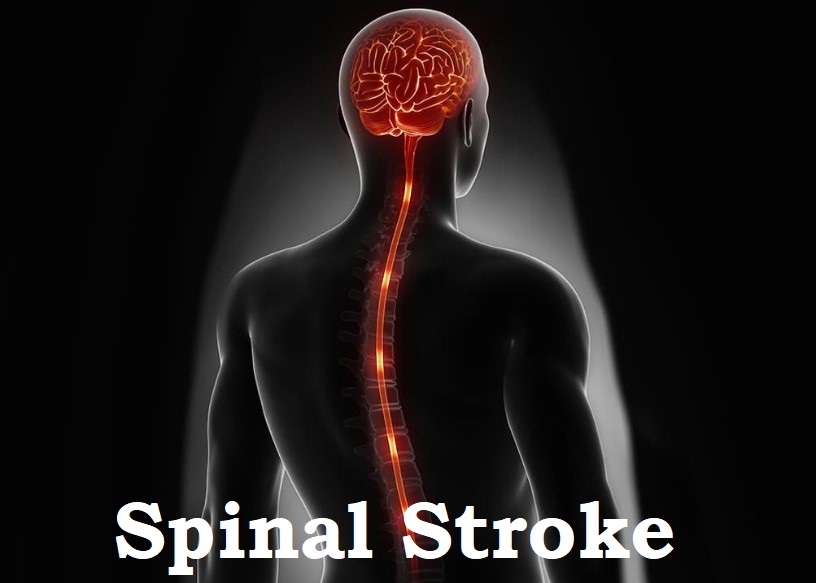A spinal stroke is an interruption in the blood supply to the spinal cord. The spinal cord depends on an adequate supply of blood to function properly. A disturbance in the blood supply can cause tissue damage and can hinder nerve signals (nerve motivations) going along the spinal line.
The blood supply to the spinal cord includes an intricate arrangement of veins. The principal veins are the foremost lumbar course (at the front of the spine line) and the back spinal conduit (at the back). Spinal strokes are most common in the first spinal canal.
Most spinal strokes are caused by blockages (typically blood clusters) in the blood supply. These are called ischaemic spinal strokes. A few spinal strokes are brought about by drains. These are called hemorrhagic spinal strokes.
Spinal strokes are an intriguing condition. They are more uncommon than strokes that affect the cerebrum. They represent 1.25% of all strokes.
Table of Contents
Signs and Symptoms of a Spinal Stroke
Notwithstanding age, individuals with spinal line wounds are at a higher risk of developing a wide range of medical issues. These include spinal cord ischemia, cardiovascular conditions, optional circumstances, contaminations, and stroke. The most supportive thing you can do for your cherished one when they experience a spinal cord stroke is to recognize what’s going on.
Side effects of a spinal line localized necrosis can appear within the space of minutes or hours of a spinal rope stroke. These signs and side effects can include:
- Unexpected sharp or irregular back pain with radiating snugness
- Sensations of choking around the chest
- Loss of reflexes
- Loss of pain or temperature sensations
- Throbbing pain and weakness in the legs
- Loss of motion
- Entrail and bladder control issues (incontinence)
Another issue that can result from this type of spinal cord issue, depending upon its seriousness, is primary line disorder. This condition can result from an obstruction in the anterior spinal canal.
Diagnosing a Spinal Stroke
At the emergency clinic, a specialist will get some information about your clinical history and perform an actual test. In light of your side effects, your primary care physician will probably think there is something wrong with the spinal cord. It may be necessary to rule out different factors that could be affecting the spine, such as a slipped disc, a growth, or a boil.
To analyze a spinal stroke, your PCP will probably take an attractive reverberation imaging filter, commonly referred to as an MRI. This kind of sweep makes pictures of the spine that are more detailed than an X-beam.

What Causes Spinal Strokes?
Most spinal strokes happen due to thickening or limiting the supply of blood to the spinal cord.
Our corridors will generally solidify, restrict and debilitate as we progress in years anyway there are a few activities that are at higher risk. These include individuals with hypertension, individuals with elevated cholesterol, individuals with coronary illness or diabetes (or a family history of coronary illness or diabetes), people who smoke, people who drink a lot, and people who don’t exercise routinely.
A few spinal strokes (ischaemic) are brought about by blood coagulation obstructing one of the corridors providing the spinal rope. Blood coagulation can take place in these courses or structures in a vein somewhere else in the body and travel (coagulation considers an embolus while it’s flowing in the circulation system to the spinal rope. Clumps generally appear where veins have narrowed because of the development of lipid stores (cholesterol) on their inward dividers. The narrowing of blood flow routes is atherosclerosis.
A few spinal strokes (hemorrhagic) happen by one of the veins providing the spinal line exploding and causing a drain. The most well-known cause is high blood pressure, which weakens and debilitates the arteries, causing them to tear. Certain people suffer from this type of spinal stroke since they have aneurysms (expand like swellings in the conduits) that burst.
Other more uncommon reasons for spinal strokes may include strangely tangled veins called arteriovenous abnormalities (AVMs), harmless vein cancers called haemangiomas, spinal tuberculosis, spinal
Chordoma, spinal line pressure, cauda equina disorder (CES), and optional spinal growths. There is also an increased risk of spinal stroke after stomach surgery.
Treatment of Spinal Strokes
Treatment aims at treating the underlying cause of the spinal stroke and lessening side effects, for instance:
To treat blood coagulation, you might be prescribed medications known as antiplatelet and anticoagulant drugs, like anti-inflammatory medicine and warfarin (Coumadin). These medications decrease the risk of another coagulation event.
If you have hypertension, you may prescribe medicine that lowers your blood pressure.
In the case of elevated cholesterol, you may be prescribed medicines to lower your pulse, such as statins.
When you become incapacitated or lose sensation in specific parts of your body, you might require physical and word-related treatment to safeguard the capacity of your muscles.
If you have bladder incontinence, you might have to utilize a urinary catheter.
When a spinal stroke is caused by cancer, corticosteroids are used to decrease the swelling. Cancer will eliminate carefully.
Assuming you smoke, you will probably approach to stop. To further lower your circulatory strain and cholesterol levels, you should also eat a fair and balanced diet rich in organic products, vegetables, and whole grains.
Prevention
It is possible to recover fully from a spinal stroke. The possibilities of a full recovery depend upon the reason and area of the stroke, the degree of the damage, the progress of the treatment, and the individual’s general health status.
Notwithstanding, many individuals will encounter enduring confusion after a spinal stroke. It may require long-term treatment or need to undergo lifestyle changes.
For a great many people, changing their way of life is fundamental to lessen risk factors and improve their chances of full recuperation.
These could include:
- Adopting an energizing, adjusted diet
- practicing routinely
- halting smoking
- coming to and keeping a solid weight
- lessening liquor utilization
FAQs
In one investigation of individuals who had a spinal stroke, 40% had the option to stroll all alone after the mean period of 4.5 years, 30% could stroll with a mobile guide, and 20 percent were wheelchair-bound.
By and large, the beginning of a spinal stroke is accompanied by unexpected and extreme neck or backaches. Other fundamental side effects of spinal stroke are muscle shortcoming in the legs, change in sensation (strange sentiments) in the lower half of the body, and issues with the inside and bladder.
In extreme instances of spinal stroke, the absence of correspondence can cause loss of motion and even lead to death. Not at all like other strokes, spinal strokes don’t usually upset the blood supply to the cerebrum.
The middle endurance time after a first stroke is: at 60-69 years old 6.8 years for men and 7.4 years for ladies; at 70-79 years old 5.4 years for men and 6.4 years for ladies; and at 80 years and more established 1.8 years for men and 3.1 years for ladies.
